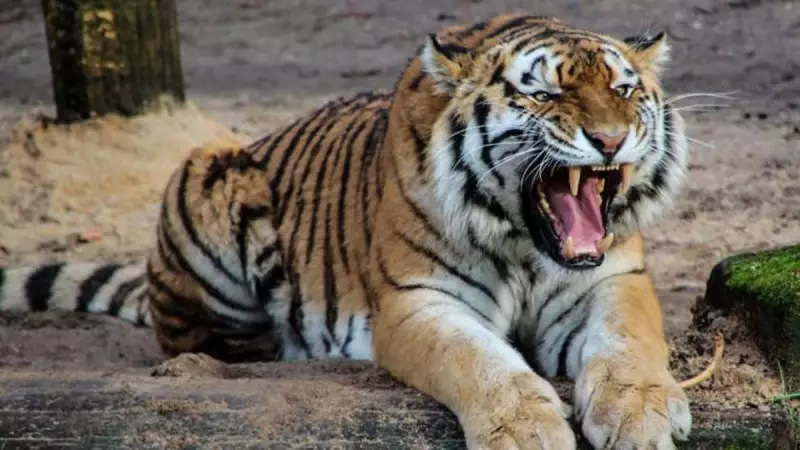
In an extraordinary development for wildlife enthusiasts and conservationists, Gujarat has witnessed the return of the majestic Royal Bengal Tiger after more than three decades. The big cat was recently spotted in the Mahisagar district, creating excitement among forest officials and local communities alike.
Historic Sighting After 32-Year Absence
The last confirmed sighting of a Royal Bengal Tiger in Gujarat dates back to 1992 when one was seen in the Dang forest area. Since then, the state has been without a resident tiger population, making this recent discovery particularly significant. Forest department officials confirmed the presence through camera trap images that captured the tiger moving through the wooded areas of Mahisagar.
The tiger is believed to have traveled approximately 300 kilometers from the Ratapani Wildlife Sanctuary in Madhya Pradesh, demonstrating the remarkable dispersal capabilities of these magnificent creatures. This migration pattern highlights the importance of wildlife corridors and connected forest habitats that allow animals to move between protected areas.
Forest Department Springs Into Action
Following the confirmed sighting, the Gujarat Forest Department has implemented immediate conservation measures. A dedicated team of 25 forest personnel has been deployed to monitor the tiger's movements and ensure its safety while also protecting local communities. The department has established 24-hour surveillance using camera traps and physical monitoring.
Local communities have been alerted about the tiger's presence and educated on safety measures. Forest officials have advised villagers to avoid venturing into forest areas during early morning and late evening hours when the tiger is most active. The department has also formed rapid response teams to address any potential human-animal conflicts.
Additional conservation efforts include setting up water sources in the area and enhancing prey base monitoring to ensure the tiger can find adequate food resources during its stay in Gujarat.
Ecological Significance and Future Implications
The arrival of the Royal Bengal Tiger in Gujarat holds profound ecological importance. It demonstrates that the state's forest habitats remain suitable for supporting these apex predators, given adequate protection and conservation efforts. The sighting has sparked discussions among wildlife experts about the potential for establishing a permanent tiger population in Gujarat.
This development could potentially open doors for tiger conservation initiatives in Gujarat, which currently only has Asiatic lions as its flagship big cat species. The successful adaptation of this lone tiger could encourage forest officials to consider more comprehensive tiger conservation programs in the future.
Wildlife experts emphasize that this sighting underscores the success of tiger conservation efforts in central India, where populations have been recovering. The natural dispersal of tigers from source populations to new areas indicates healthy ecosystem dynamics and effective conservation strategies at the national level.
The Gujarat Forest Department continues to monitor the situation closely, documenting the tiger's behavior and movement patterns. This valuable data will contribute to understanding big cat ecology and inform future conservation planning not just in Gujarat but across tiger habitats in India.





